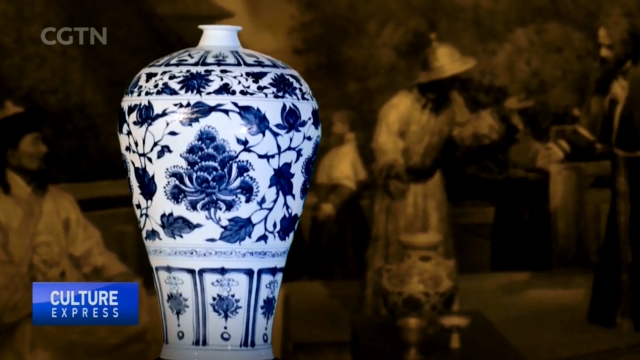
19:37, 14-Sep-2018
History of Ceramics: Museum highlights 'Chinese Porcelain Capital'
Updated
18:52, 17-Sep-2018
04:02

Jingdezhen in east China's Jiangxi Province is a world-renowned porcelain capital. To explore the town's fascinating history, you have to experience the city's Ceramics Museum. It's the first of its kind in China.
Indulge yourself in the breathtaking beauty of Chinese ceramics. First built in 1953, the Jingdezhen Ceramics Museum houses a collection of over 36 thousand artifacts. The earliest ceramics at Jingdezhen can be traced back more than 1700 years. But it was during the Yuan Dynasty, with the establishment of the Fuliang Porcelain Bureau in 1278, that Jingdezhen began to produce high-quality wares for the imperial palace and government offices.
The Green Peony Glazed Vase was just one of the products during that period. And it is the most valued centerpiece in the museum, as there are only some 100 pieces of Yuan Dynasty blue and white porcelain in China now.
SHAO HONG, DEPUTY DIRECTOR JINGDEZHEN CHINA CERAMICS MUSEUM "Compared to earlier wares, the Yuan wares of Jingdezhen show a marked improvement in the variety of forms, decorative motifs and glaze colours. Despite the short life of the Yuan Dynasty, the Jingdezhen potters of this period made important advancements. It is widely believed that the blue and white Yuan Dynasty porcelain has a dominant position in the history of Chinese ceramics.
The height of fame and technology of Jingdezhen kilns came during the Qing Dynasty. Artists were no longer content with the traditional porcelain wares. Painting on porcelain boards and vases became the trend. "Zhushan Ba-You", or "Eight friends from Zhushan" were among the most celebrated porcelain painters in late Qing dynasty.
ZHAO GANG, DIRECTOR JINGDEZHEN CHINA CERAMICS MUSEUM "The leader of 'Zhushan Ba-You' was Wang Qi. When he was in good mood, Wang Qi would bring together his friends to drink and exchange their painting techniques. Each of the eight artists had their own speciality, like Wang Qi was adept with portraits, and Tian Hexian was good at flowers. As their gatherings always took place in Zhushan, later people named the group 'Zhushan Ba-You', or 'Eight friends from Zhushan'."
The exquisite porcelain produced in Jingdezhen has been admired both in China and worldwide. For hundreds of years, porcelain made its way overland and by sea along the Silk Road across the globe, acting as a medium to facilitate the cultural and commercial exchange between the East and West.
Now one of the priorities with the museum is to connect the time-honored craft with the younger generation. A variety of lectures and activities have been organized, targeting children and students of different ages. They can also try to make their own pottery based on traditional methods.
ZHAO GANG, DIRECTOR JINGDEZHEN CHINA CERAMICS MUSEUM "Museums can do much more than just put things on display. We have also designed multimedia games to demonstrate the complete procedure of porcelain production. There are also a wide spectrum of unique souvenirs for you to take home."
Director Zhao wishes visitors feel proud of Jingdezhen, and the ceramics that form a significant part of Chinese culture.

SITEMAP
Copyright © 2018 CGTN. Beijing ICP prepared NO.16065310-3
Copyright © 2018 CGTN. Beijing ICP prepared NO.16065310-3